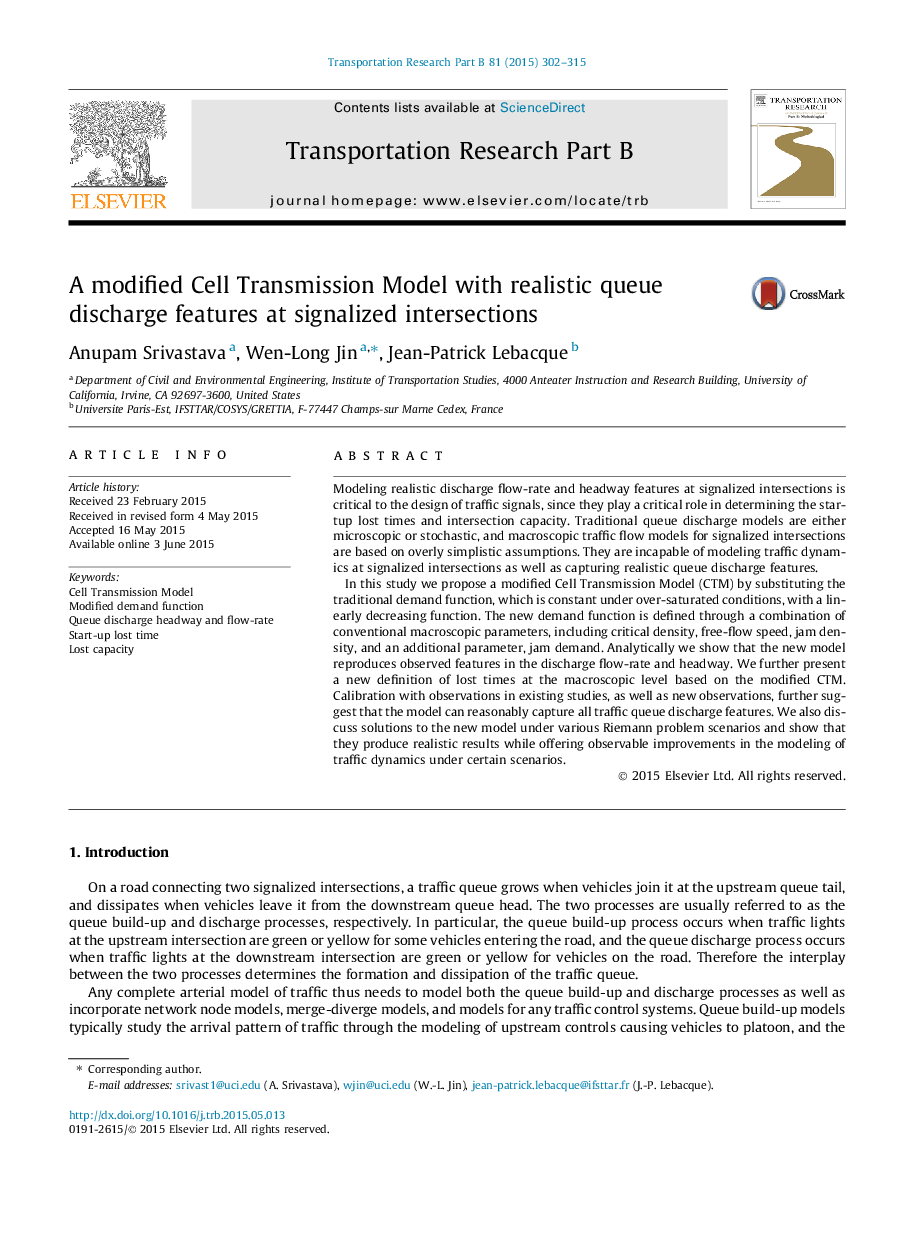| Article ID | Journal | Published Year | Pages | File Type |
|---|---|---|---|---|
| 1131682 | Transportation Research Part B: Methodological | 2015 | 14 Pages |
•Present a modified Cell Transmission Model with a linearly decreasing demand function.•Study the model’s behavior through the various setups of the Riemann problem.•Present a new ‘macroscopic’ definition of start-up lost time.•Validate the model against real observations.
Modeling realistic discharge flow-rate and headway features at signalized intersections is critical to the design of traffic signals, since they play a critical role in determining the startup lost times and intersection capacity. Traditional queue discharge models are either microscopic or stochastic, and macroscopic traffic flow models for signalized intersections are based on overly simplistic assumptions. They are incapable of modeling traffic dynamics at signalized intersections as well as capturing realistic queue discharge features.In this study we propose a modified Cell Transmission Model (CTM) by substituting the traditional demand function, which is constant under over-saturated conditions, with a linearly decreasing function. The new demand function is defined through a combination of conventional macroscopic parameters, including critical density, free-flow speed, jam density, and an additional parameter, jam demand. Analytically we show that the new model reproduces observed features in the discharge flow-rate and headway. We further present a new definition of lost times at the macroscopic level based on the modified CTM. Calibration with observations in existing studies, as well as new observations, further suggest that the model can reasonably capture all traffic queue discharge features. We also discuss solutions to the new model under various Riemann problem scenarios and show that they produce realistic results while offering observable improvements in the modeling of traffic dynamics under certain scenarios.
